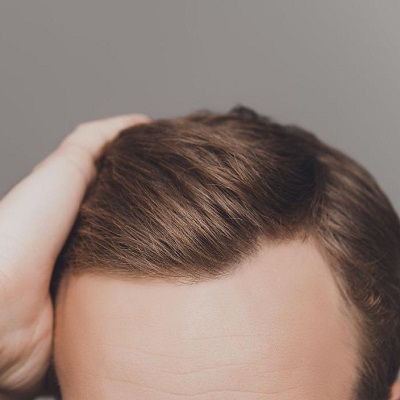Introduction
Hair loss is a common concern that affects both men and women, and in Oman, the demand for hair restoration solutions has been steadily rising. FUT Hair Transplant in Oman is one of the most sought-after hair transplant methods, known for its precision and long-term effectiveness. For Omani patients considering this treatment, understanding what to expect in terms of long-term results is key to making an informed decision.
What is FUT Hair Transplant?
FUT, or Follicular Unit Transplantation, is a hair restoration procedure in which a strip of scalp is removed from the back of the head, where hair is genetically programmed to be resistant to balding. This strip is then divided into individual follicular units, which are carefully implanted in the areas of hair loss. FUT is particularly popular for patients who require a large number of grafts, as it allows for a significant volume of hair to be transplanted in one session.
The Immediate Post-Surgery Phase
After undergoing FUT surgery, Omani patients can expect a recovery phase lasting about 7 to 10 days. During this time, there may be some redness, swelling, and mild discomfort in the donor and recipient areas. Scabs will form around the transplanted follicles, which will naturally fall off within a week. It's important to follow the post-operative instructions provided by the surgeon, including guidelines on hair washing, activity restrictions, and medications to prevent infection.
Hair Shedding: The Shock Loss Period
A few weeks after the procedure, patients often experience a phase known as "shock loss," where the transplanted hairs may shed. This can be alarming, but it is a completely normal part of the process. The follicles remain intact, and new hair will begin to grow from them in the coming months. Omani patients should be prepared for this temporary shedding and understand that it is a positive sign of progress.
Hair Growth Timeline: What to Expect
FUT hair transplant results do not happen overnight. New hair growth typically starts around the three-month mark, with significant changes visible between six to nine months post-surgery. By the 12-month point, Omani patients should see the full effect of their FUT transplant, with natural-looking hair growth that blends seamlessly with the surrounding hair.
The long-term success of FUT is one of the key reasons it remains a popular choice. The transplanted hairs are permanent and will continue to grow for a lifetime. However, since the procedure doesn’t stop the natural progression of hair loss, some patients may need additional treatments in the future if hair thinning continues in other areas.
Longevity and Quality of Results
For Omani patients, the long-term results of an FUT hair transplant can be life-changing. One of the primary advantages of FUT is that it yields dense and natural-looking hair that lasts for years. The transplanted follicles are resistant to the effects of dihydrotestosterone (DHT), the hormone responsible for male and female pattern baldness. As a result, the transplanted hair remains thick and healthy over time.
However, maintaining the health of the remaining natural hair is crucial. Patients are often advised to consider hair loss prevention treatments, such as medication or topical therapies, to slow down further thinning in non-transplanted areas. Consulting with a specialist to create a long-term hair care plan can help Omani patients maximize the results of their FUT procedure.
FUT vs. FUE: Which Offers Better Long-Term Results?
While FUT and Follicular Unit Extraction (FUE) are both highly effective hair transplant techniques, FUT is often preferred by patients who need larger grafts and those who prioritize long-term density. FUE, on the other hand, may be better suited for patients seeking less scarring or who prefer a quicker recovery. For Omani patients with extensive hair loss, FUT may provide better long-term results, as it allows for a greater number of follicles to be transplanted in a single session.
Factors Affecting Long-Term Results in Oman
Several factors can influence the long-term success of an FUT hair transplant in Oman:
- Surgeon Expertise: The skill and experience of the surgeon play a significant role in determining the quality of the long-term results. A highly skilled surgeon ensures that the grafts are placed with precision, leading to a more natural outcome.
- Patient Age and Hair Loss Progression: Younger patients may continue to experience hair thinning, which could affect the overall appearance of their hair in the future. It’s important to have realistic expectations about future hair loss and consider additional treatments if necessary.
- Post-Operative Care: Following the surgeon’s post-op instructions is essential for optimal healing and growth. Poor post-operative care can lead to complications, including poor graft survival, which affects the long-term outcome.
- Hair Type and Density: The patient’s hair type, color, and texture can also influence the final results. For instance, individuals with thicker hair strands may achieve more coverage with fewer grafts, while those with fine hair may require more grafts for the same effect.
Conclusion: A Life-Long Investment in Hair Health
For Omani patients, FUT hair transplantation offers a reliable and effective solution to hair loss. With proper care and realistic expectations, the results of an FUT transplant can provide natural, long-lasting hair growth that boosts confidence and improves quality of life. While the procedure itself is a significant investment, the long-term benefits far outweigh the initial cost and recovery period.
Choosing a skilled surgeon and adhering to post-operative care instructions are critical steps in achieving the best possible outcome. Whether it’s about restoring hair density or enhancing appearance, FUT hair transplant remains a popular and enduring option for those in Oman seeking a permanent solution to hair loss.





Comments